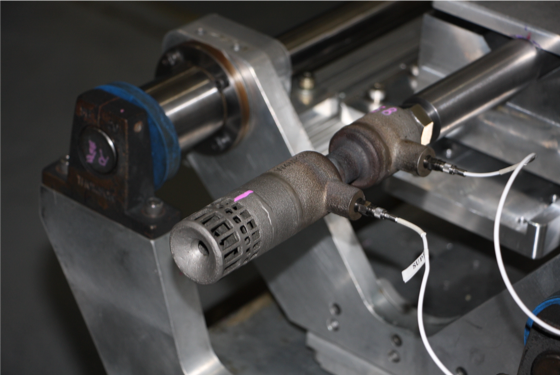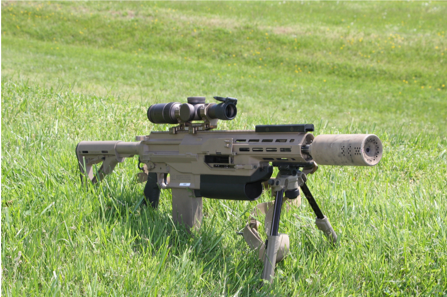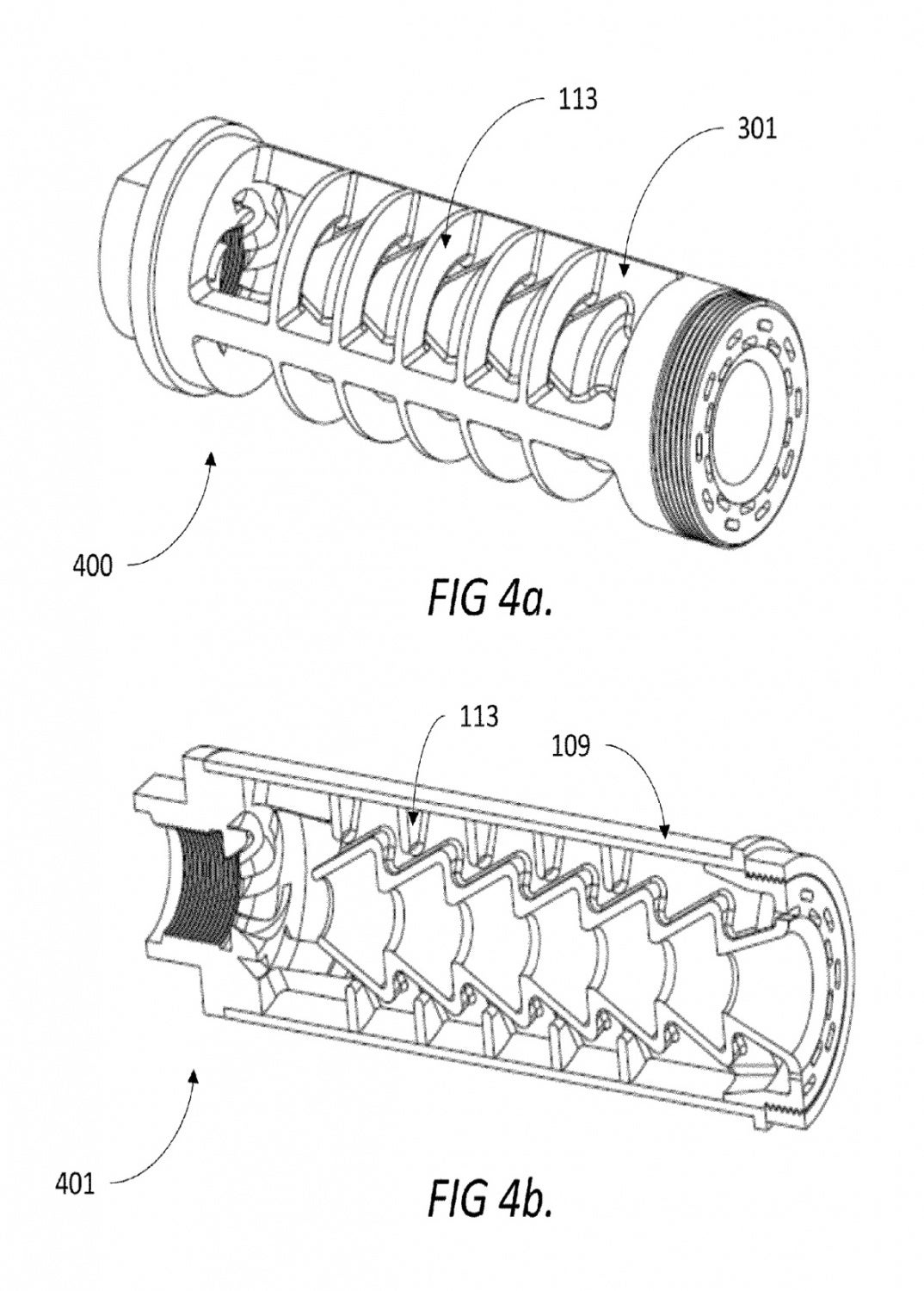Engineers at the US Army’s CCDC Army Research Laboratory, an element of the U.S. Army Combat Capabilities Development Command, part of the Army Futures Command, have developed a special rifle suppressor with an integrated muzzle brake, which they are calling the Smuzzle.
The ‘Smuzzle’ has been in development since 2007 when the Army began considering its requirements for its next generation infantry weapon. “A few years ago, we were asked whether our next-gen squad weapon should have a muzzle brake or a suppressor,” said Greg Oberlin at the U.S. Army’s CCDC Army Research Lab. “We asked ourselves ‘why not both?’” Oberlin said. “It was an ‘a-ha’ moment.” Oberlin is a small-arms engineer who developed the Smuzzle with Daniel Cler and Eric Binter.
According an article at TechLink, the DOD’s non-profit partnership intermediary for technology transfer, the inventors are ready to license the patented design to a business partner who can manufacture it for military or non-military sales.

The Micro-Smuzzle 7 installed on a free-impulse rig pressure sensor to measure internal pressure and blowdown rate (US Army photo)
The intent of the design was to reduce recoil and muzzle flash while also suppressing the weapon. Development of the Smuzzle was carried out from 2007 to 2018, after dozens of prototypes and four patents, including U.S. Patent 10,598,458, granted to the Army in March 2020.
The Smuzzle counteracts the impact energy felt by the shooter by venting pressurized gases up and back through asymmetrical vents, which pushes the muzzle down and pulls the gun forward. The hybrid Smuzzle reportedly provides a 50% drop in volume at the shooter and a 25% reduction in the flash signature downrange with a minimal weight increase.
TechLink describes the Smuzzle as having “three sound suppressing baffles lay in front of a brake baffle. The design allows gas dissipation at a lower pressure over a longer duration. In this context, longer means just a few more milliseconds, but it makes a difference.”
“That brake baffle actually has a curvature to it borrowed from a 155mm muzzle brake I designed,” said Daniel Cler, head of suppressor research at the U.S. Army’s CCDC Armaments Center in Picatinny, New Jersey.
Testing of the Smuzzle has been conducted in several calibers including 7.62x51mm and using the new 6.8mm GP projectile. Army Research Lab has tested the muzzle device-come-suppressor with the M240B and the Next-Generation Squad Weapon Technology Demonstrator, developed by Textron, firing 6.8mm caliber ammunition.
“It was designed for automatic and semi-automatic weapons, but it’d be useful for anyone shooting magnum cartridges,” Cler said. “It has what you could call a bottom blocker that also reduces how much dust kicks up.” The inventors note that the design can be scaled to be used with any caliber. A smaller can weighing 0.8 lbs has been developed with other larger versions weighing approximately 3 lbs.

The Next Generation Squad Weapon Science and Technology prototype is shown with a fifth-generation Smuzzle installed (Daniel Cler/US Army)
When testing with the 6.8mm Next-Gen Squad Weapon Technology Demonstrator, which was a precursor platform to the current NGSW program weapons, the research team fabricated “micro-smuzzles” using printed titanium. According to TechLink, the Army Research Lab’s testing focused on braking and a bottom blocker that would reduce muzzle climb and the incorporation of a bore evacuator.
Matthieu Dumont, a senior technology manager at TechLink, explained that the invention, while designed for military use, has strong potential in the civilian consumer market, where recreational shooters regularly purchase rifle accessories. “Cler and his colleagues are open to supporting a company that licenses the patent,” Dumont said. “That’s not always the case, the DOD has a large portfolio of IP, but their interest in a cooperative research agreement makes this a gem.”
The Smuzzle’s inventors said they have fired hundreds of rounds through one of the prototype Smuzzles when mounted on an M240B mounted in a test cradle in a full auto failure test. Cler, one of the inventors noted that the Smuzzle “was glowing red, but it never failed.”
 Your Privacy Choices
Your Privacy Choices

